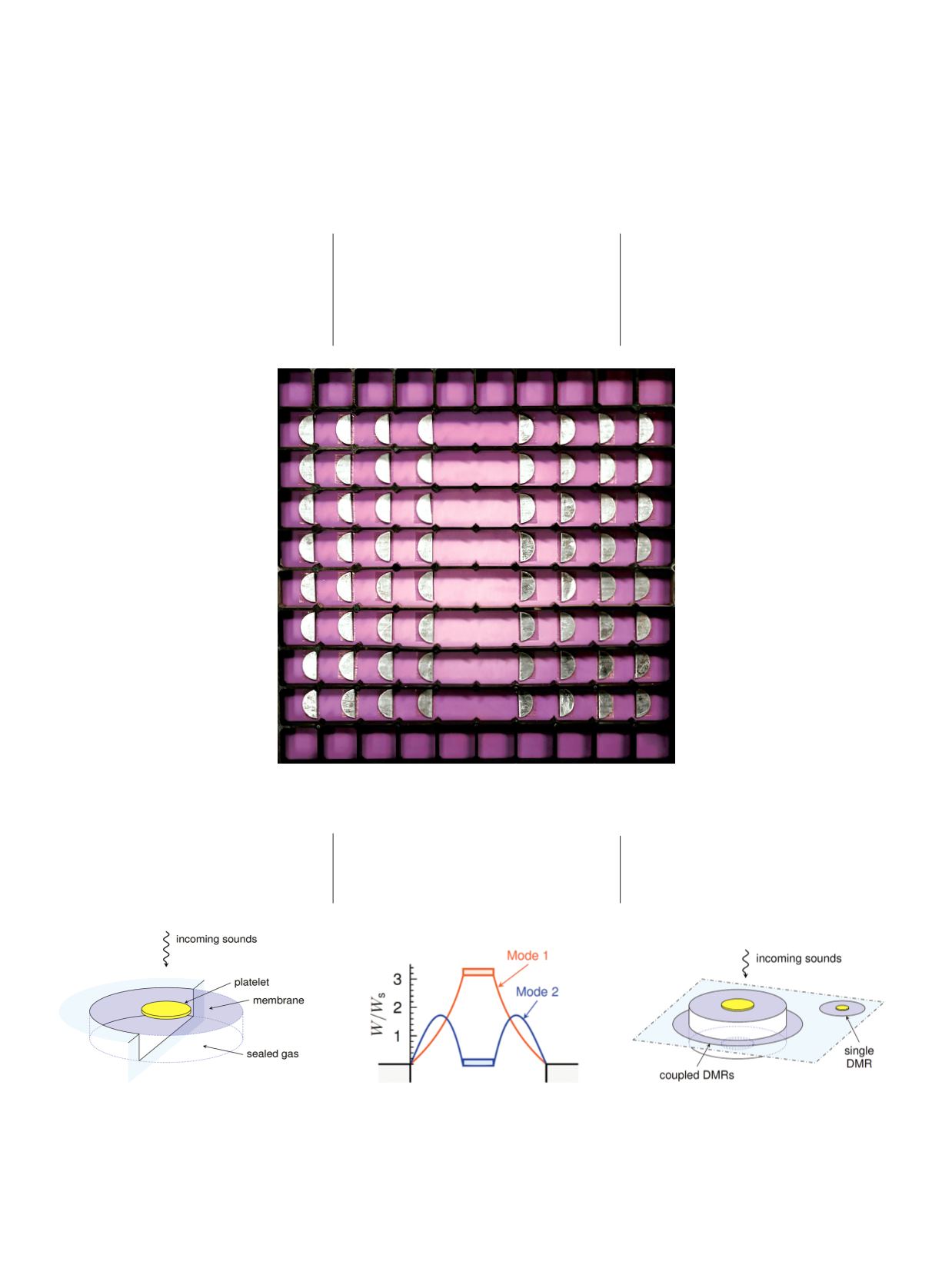
18
@
U S T . H K
A flat-panel composite absorber with two
decorated membrane resonators (DMRs). By
combining a coupled DMRs placed in close vicinity
to a single DMR, a panel can totally absorb sound,
independent of the incident direction.
Applied Physics Letters 107, 104104 (2015)
Cross-sectional illustration of the two lowest
frequency resonance modes excited by the incident
wave. Here
W
is the normal displacement of the
membrane, normalized to the incident sound
wave amplitude
W
S
. The flat rectangle at the
center indicates the platelet that decorates the
membrane.
Nature Materials 13, 873–878 (2014)
Schematic illustration for a unit of the
metasurface. By sealing a layer of gas in a shallow
cell with a decorated membrane resonator,
this composite structure converts the originally
reflective solid surface to be totally absorbing at
designed frequencies.
Nature Materials 13, 873–878 (2014)
Gradually, many academics and practi-
tioners in the field started to take notice
of these groundbreaking results. More
people began to repeat the HKUST find-
ings and consider the possibilities that
such outcomes could open up. Some en-
thusiasts even built mechani-
cal devices and demonstrated
them on YouTube. Tellingly,
the number of citations for the
research team’s original
Science
article began to rise, indicating
that more researchers were
exploring the area.
But Prof Sheng was still
not satisfied. He wanted to
determine a way to not only
reflect sound but also to totally
dissipate the energy. With
sound absorption and mitiga-
tion already a huge market, it
would require a material with
near total-absorption capabili-
ties to take the findings down-
stream to commercialization
and into general use, a key aim
for Prof Sheng.
Then in 2013 came a
decisive realization: latex
membrane + button + sealed
chamber with air. In hind-
sight, this invention was stunningly
simple. Yet it was to prove the missing
link in the quest for perfect absorption.
Significant papers followed in
Nature
StageTwo:Wave Absorption
HKUST developed a thin, lightweight membrane-type acoustic metamaterial.
The flimsy membrane, decorated by a button and backed by a shallow cell,
could absorb more than 99% of low frequency sound.
Materials
(2014) and
Applied Physics
Letters
(2015). The first explained how
this concept could be utilized to en-
able complete absorption of acoustic
waves, or conversion into other forms of
energy, such as an electrical current. The
second provided the experimental find-
ings of two sample products, detailing
observations of sound absorption up to
99.7% through destructive interference
to stop backscattering, using decorated
membrane resonators.
Industrial Application
Approaches by industry as to potential ap-
plications have also taken off. One major
company, for example, is inter-
ested in investigating whether
the efficiency of turbines,
currently limited by noise
emission, could be boosted
through using the acoustic
metamaterial discovery to
reduce such noise. Even a 1%
increase in efficiency of tur-
bines could translate into bil-
lions of dollars in fuel savings
over the years. Meanwhile,
a start-up company in Hong
Kong Science Park, is seeking
to mass produce sound
absorbing panels based on the
patented technology.
As we now herald the pros-
pect of a much more peaceful
existence in the future, Prof
Sheng and his researchers are
heading back to those original
acoustic metamaterial models
to see if they can be applied in a
totally different context. Their
next goal is nothing short of earth shatter-
ing: to explore the possibility of whether
acoustic metamaterials can be used to
attenuate seismic waves.


